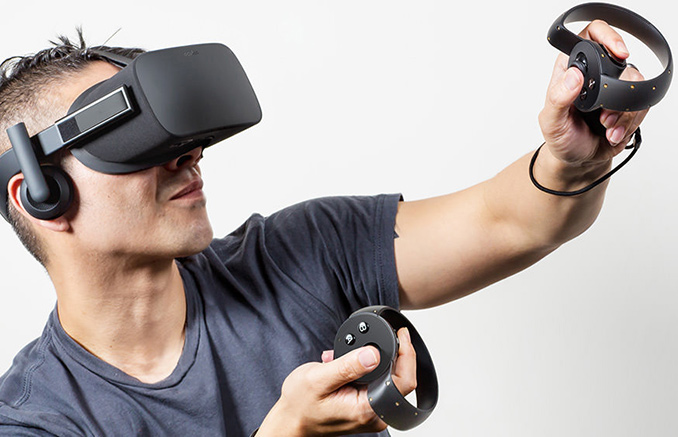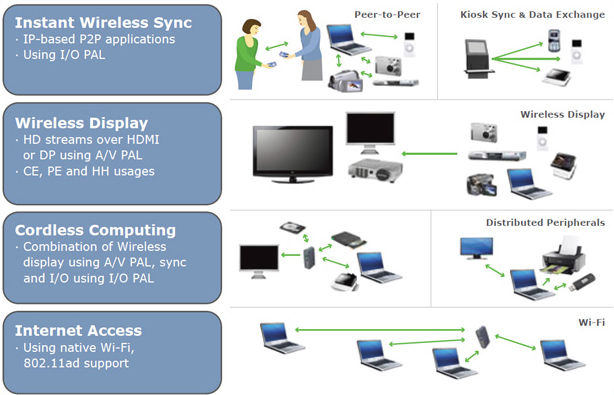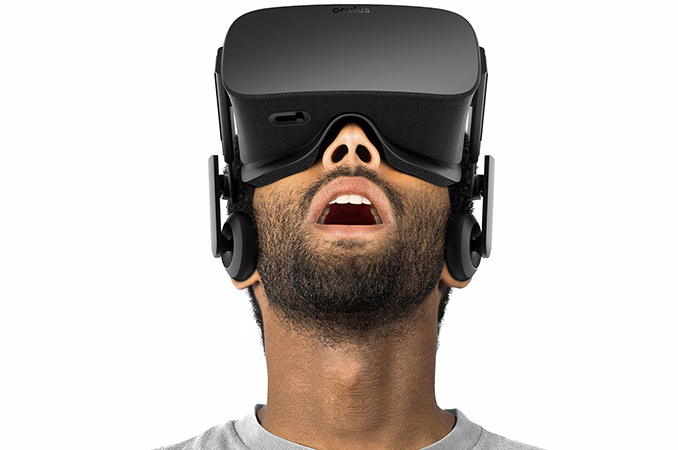AMD Acquires 60 GHz Wireless IP and Staff from Nitero
by Anton Shilov on April 15, 2017 9:00 AM EST
AMD on Tuesday announced that it had acquired millimeter wave radio-related intellectual property and key engineers from Nitero. Nitero specialized in radio technology for the 60 GHz range, which is expected to be the basis of a number of short range wireless standards.
AMD indicated that they purchased Nitero in order to focus on developing the necessary technology to wirelessly connect AR and VR headsets to host PCs, thus improving AR/VR experience. Though more broadly speaking, Nitero’s low-latency 60 GHz wireless interface in general can be used in various ways to connect different devices, and owning such an IP may be important for AMD’s patent portfolio.
Current-generation VR headsets connect to PCs using HDMI interface, which is very convenient, but which naturally reduces freedom of movements and sometimes adds certain complications. Since VR headsets are just head-mounted displays with audio, usage of HDMI is just natural because the interface has enough bandwidth for high-resolution high-framerate graphics and because the software stack is already here — OSes, drivers, applications “understand” what HDMI is. Moreover, with 10.2 Gbps raw throughput (8.1 Gbps with 8b/10b overhead removed), the HDMI 1.4 provides enough bandwidth for 2160×1200 at 90 Hz resolution offered by the HTC Vive and the Oculus Rift.
Meanwhile cables sometimes negatively affect VR/AR experiences and even usage models. A number of companies (DisplayLink, TPCast, Nitero etc.) have been trying to use the millimeter wave radio technology to build wireless VR headsets and some of them even demonstrated their devices at MWC 2017 earlier this year. It is not completely clear whether the 60 GHz radio used by the three aforementioned companies is compliant with the WiGig (802.11ad) specification, but Nitero is known for its WiGig chips for mobiles.
At present, WiGig is used for wireless docking stations and provides ~7 Gbps of bandwidth, which is enough for transmission of documents or files, but is barely enough even for current-gen VR headsets (not to mention input lag). Nonetheless, it is important to start from something and it appears that AMD is betting on Nitero’s technologies. Just to add perspective, the WirelessHD 1.1 standard designed by Silicon Image supports up to 28 Gbps data transmission rate — that is comparable to DP 1.4 and is enough for 4Kp120 with compression (or 8Kp60), so 60 GHz radios can scale very well.
AMD said that Nitero had created a phased-array beamforming millimeter wave chip that can enable “multi-gigabit transmit performance with low latency” for VR headsets without line-of-sight requirements associated with some other implementations of millimeter wave radio technologies, which suits wearables very well. AMD is not disclosing exactly what they intend to do with the IP beyond further developing it for VR/AR, so it's not clear at this time whether they intend develop their own products from it. AMD could further develop the IP and then license it out for partners to build the final products, or design the chips themselves and sell that to partners as part of a reference kit. There's also the possibility of integrating the IP into their other products, though the extreme short range nature of 60 GHz wireless does pose some unique challenges to applications that aren't line-of-sight.
So far, wireless display technologies (apart from Miracast) have not really taken off due to various reasons. But since so many companies are working on such technologies based on 60 GHz radio, the prospects of its millimeter wave radio IP here may be considerably more promising for AMD if it manages to popularize the standard first among developers of VR headsets and then among makers of displays.
Putting our speculations aside, the only thing that AMD shares now is that the Nitero acquisition is a long-term investment that could enable the company to create more immersive computing experiences.
Related Reading:
- The Khronos Group Announces New Standards Collaboration for VR Integration
- IFA 2016: Live Blog of AMD Keynote with Mark Papermaster, CTO
- Intel Announces Project Alloy: Untethered Augmented Reality in a VR Headset with RealSense
- GDC 2017 Roundup: VR for All - Pico Neo CV, Tobii, & HTC
- Oculus VR Acquires The Eye Tribe, Developer of Eye Tracking Technologies
- IFA 2016: Qualcomm Announces VR820 Reference Platform, QCA9379
Source: AMD












19 Comments
View All Comments
wumpus - Saturday, April 15, 2017 - link
Either Ryzen sales have been even more brisk than I (and more to the point, the motherboard manufacturers) could imagine, or they've been selling stock (after a nice rise, I must point out) again (are people buying AMD bonds? I guess they would be above junk, but still not ideal).I really wonder where AMD gets its money (although after seeing that Ryzen can actually compete it would be easier to lend AMD money). This isn't really an attack on AMD: they wisely spent nearly all their money on Zen, now they probably need all the things they couldn't afford when designing Zen (and have a much better chance of getting the money).
prisonerX - Saturday, April 15, 2017 - link
What a stupid comment. You don''t know how much the acquisition cost and you erroneously think that AMD is on the verge of bankruptcy or something.webdoctors - Saturday, April 15, 2017 - link
I thought AMD's worth was negative in the past and there was rumours of bankruptcy/takeover by HP:This article mentions AMD debt being more than the assets (i.e. negative worth) in the last 2 years:
http://amigobulls.com/articles/the-advanced-micro-...
I don't know how to read a balance sheet so the article might be BS, maybe someone can confirm, here's the financials:
https://www.google.com/finance?q=NASDAQ%3AAMD&...
This aquisition was probably really cheap, 20 employees at lets say $500K each (generous and contingent on them working another 2-4 years at AMD), $10M cost. The IP is probably worth $10M? $50M? I dunno, so lets say total cost to buy was $60M. That's nothing for AMD, when they lose or spend $1B+ to buy stuff like SeaMicro and write it off. They're quarterly losses or writedowns can be higher so this stuff is noise.
This probably is good news for their custom silicon group. They'll be a one stop shop where you can buy a game console SoC that has built in wireless for VR, GPU, CPU , and all the other IPs for your appliance. Also potentially for laptops that don't require third party IPs either.
ddriver - Sunday, April 16, 2017 - link
If you calculate the net performance of AMD for the last 20 years, you'd realize that the company is a black hole that keeps on devouring money. The few quarters that they made money are completely offset by the predominant heavy losses.How and why the company is kept alive is a complete mystery. My theory is that intel is secretly funding it to keep an impotent pseudo competitor to downplay their defacto monopoly on the market. Every once in a while, amd gets to make a good chip, which is a good way to make quick money by hijacking the wild fluctuation of share cost when that happens.
ddriver - Sunday, April 16, 2017 - link
On the acquisition - such things are rarely, if ever, worth the money. It is being done to blow up the bubble. It would cost much less to develop the tech from scratch.And besides, compared to having a big box strapped to your face, a cable seems a minor nuisance. It would seem the best solution is a thin, coiled, stretchy high bandwidth optical fiber. Sure you won't have full freedom of motion with it, but at least you will save on latency big time. VR is already laggy enough without wireless video transfer and the mandatory extra level of compression and decompression to make it feasible.
Other than that, pack a PC in a backpack and you are set. Full freedom. 5 kilos of weight outta be enough to get ya an hour or two of VR freedom experience. VR is a perf hog, requires bulky hardware, even bulkier cooling, and that sucks a lot of power.
twtech - Wednesday, April 19, 2017 - link
A cable, that you can't see with the headset on, and could easily tangle and pull out - if not actually trip over it - with room-scale VR. It's not just a "minor nuisance".0ldman79 - Wednesday, April 26, 2017 - link
The cable will contribute to neck strain. The wireless will help with the length of time someone can use the VR headset considerably.I think that is going to be the final push that will let VR become more mainstream. Whether or not it will be AMD doing that remains to be seen.
Lord-Bryan - Sunday, April 16, 2017 - link
Thats some interesting postulation you've got thereReflex - Monday, April 17, 2017 - link
Ask him about Korea sometime. Or don't, if you value rationality.ddriver - Monday, April 17, 2017 - link
You confuse mainstream conformism for rationality. A common trait amongst the ignorant irrationals ;)rational: adjective
"based on or in accordance with reason or logic"
The opinions I express stray far from the mainstream precisely because the are rational, that is based on logic and reason, in contrast to the "acceptable mainstream", which is based on manipulative garbage commercial media. To the indoctrinated mind, trained to conform through peer pressure, the free and rational mind is a complete mystery, and what you actually perceive as irrational is expressing an actual individualistic opinion, because it doesn't generate peer approval, which people like you crave, because for you it creates an illusion of self worth, while in reality being nothing more than cattle mentality mechanism of conformity.